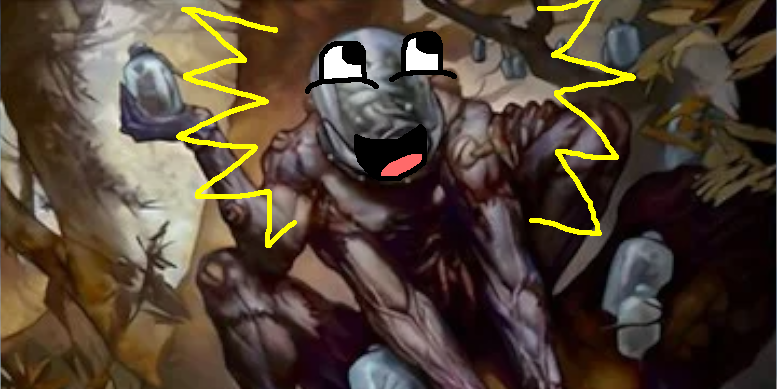Hey everyone. This is Scott from the top four of the Great Designer Search 3.
In this series of articles I give some thoughts on Magic card design from an outsider’s perspective.
Today I want to talk about a topic that’s been coming up ever since… well, even just a few days after Innistrad: Midnight Hunt was released on Magic Arena. The disparity between blue/black and the other colors in the draft format.
Even though LSV is one of the best Magic players in the world, the fact that he forced blue/black decks to #1 Mythic ranking (after hitting #13 below) is still a little strange.
Stayed up too late forcing UB, and got to Mythic #15 or so by doing so. I literally took only blue and black cards for 15-20 drafts in a row, and it seemed pretty good. Some representative decks attached. pic.twitter.com/AaU7ltatPG
— Luis Scott-Vargas (@lsv) September 20, 2021
Deathsie, a limited-only streamer, here expresses the other side of the majority of his opponents being blue/black: it’s just not that fun.
I'm getting kinda tired of Innistrad limited… if I wanted to play against the same goddamn deck all day I'd just play constructed 😂
— DEΛTHSIE (@Deathsie) September 26, 2021
Draft does have some amount of a self-correcting nature to it, as in, if a color or color pair is heavily drafted then those people who draft it will end up with weaker decks on average, since they’re fighting over the same cards. But that only goes so far.
In draft, the vast majority of the cards in your deck and the cards that you play will be commons. And in Midnight Hunt, there are so many more quality commons in blue/black than the other colors, especially green/red, that it’s quite often wrong to not take them.
It’s just a feel bad experience when you try to stay out of blue/black, because “of course everyone knows it’s the best,” only to get passed 10th and 11th pick premium blue/black commons like these:
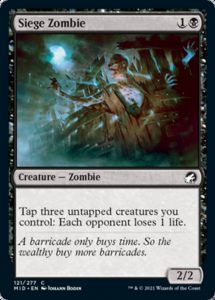
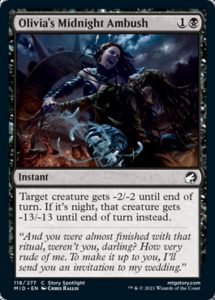
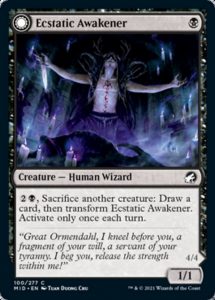
And that’s to say nothing of the fact that, when drafting online, you’re going to be paired with people outside of your pod. So the fact that you didn’t fight the other five drafters over blue/black in your pod means nothing when you’re paired with people from other pods who drafted strong blue/black decks.
Plus, all of this is coming off the heels of Adventures in Forgotten Realms, where black/red aggro/sacrifice was by far the strongest color combination thanks to its powerful commons, and it was often wrong to not force it during draft.
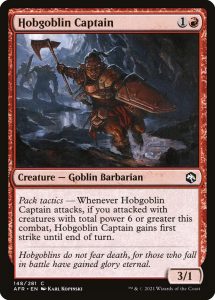
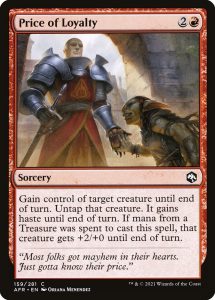
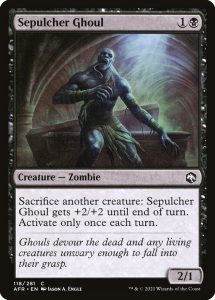
So what can Wizards do to alleviate this? Here are three possible solutions:
1. Make small changes to the set online after release, such as switching around rarities. For example, Organ Hoarder could get bumped up to uncommon and Fading Hope get bumped down to common in its place. I’m personally a fan, but I know a lot of players want paper/digital magic to mirror each other, so it might not be popular.
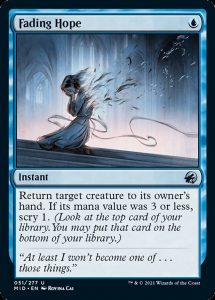
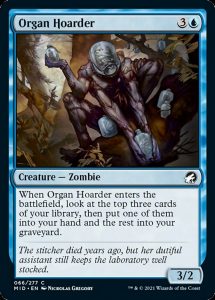
2. Do more playtesting before releasing the set. Honestly this is likely just not feasible. There are more drafts done in a single day after release than done in all of playtesting, so it’s just impossible to do enough playtest drafts to accurately find color disparities by brute force.
3. Use a system that can find color disparities in advance. This would be a way that, while not perfectly objective, could test the commons in each of the colors to make sure they’re reasonably balanced.
This one is, I believe, a possible solution.
Mark Rosewater has mentioned before that they’ve used an A/B/C system to rank cards on their power in limited, but I think that is a bit too general. Something more specific could not only reveal problems, but also present solutions.
Here’s what I propose: a rating for each common that ranks its mana cost rate, its synergy with other cards in the set, and its versatility of being good anytime, most of the time, or only sometimes.
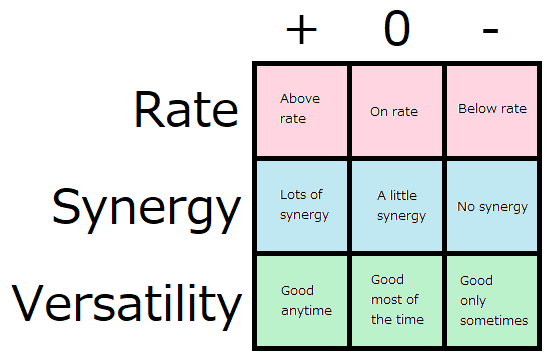
For versatility, something like Consider would be good anytime (+), something like Galedrifter would be good most of the time (0) since it doesn’t come down early and can get overwhelmed in the late game but swings nicely in the middle, and something like Falkenrath Perforator would be good sometimes (-) since it gets shut down pretty easily by any 1/3 by the opponent.
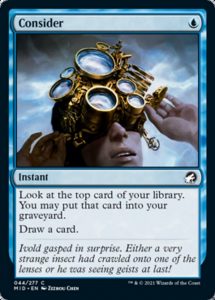
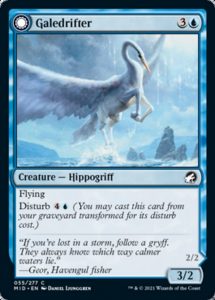
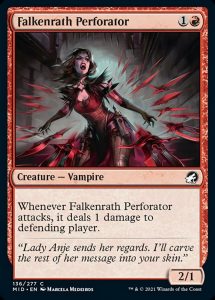
Note that these are not the only factors in judging whether or not a card is good, nor are they comments on the overall power level of the card, since the chart’s intended use would be before the set is released and the power levels are not really known. The three categories are purposefully things that can be mostly measured without the context of the limited meta.
Let’s look at some cards from blue, the best color in MID, and put them on the chart:
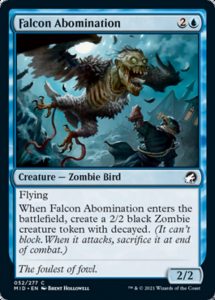

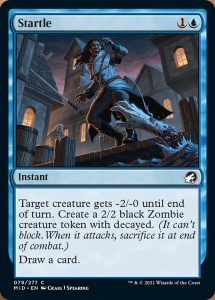

Again, it’s not a perfectly scientific system, but I rated Falcon Abomination above rate because the decayed zombie is a “free” bonus, the zombie has lots of synergy with sacrificing/tapping creatures, and it’s a card that you’re happy to play most of the time.
Organ Hoarder is above rate since putting the cards in your graveyard is a “free” bonus, the milling has a little synergy with flashback/disturb, and you’re always happy to see it.
And Startle is above rate because, again, the decayed zombie is “free,” it has synergy with sacrificing/tapping, and you can play it anytime even just to cycle.
Now let’s take a look at some cards from red, the worst color in MID, and put them on the chart:

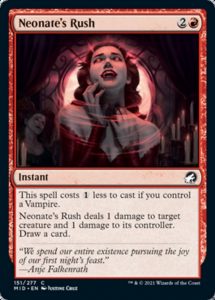
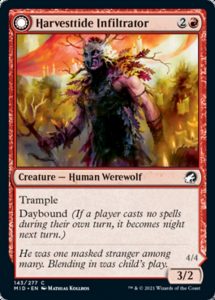

Here, Moonrager’s Slash is on rate since it can become cheaper but is quite often cast for three, it has synergy with one mechanic in the set: day/night, and you’re happy to see it pretty much anytime.
Neonate’s Rush is below rate since it can become cheaper but even then only by one and it’s a lot at full price, it has a little synergy with turning on the “dealt damage” spells, and it’s good most of the time because it can always at least draw a card, but sometimes it’s a very expensive cantrip.
Harvesttide Infiltrator is on rate, doesn’t really have synergy with other mechanics in the set (besides ones that care about it being day/night, but at common there are only a few and outside of the red/black removal they’re not very good), and while it’s an okay three drop, it can get roadblocked easily. Sure, you can pass your turn to flip it into a 4/4, but you either need an ability to activate or something else to do during your opponent’s turn, or else the loss of tempo could kill you.
Overall, there is obviously room to move around the ratings, but I’m not super concerned over individual cards, I’m more concerned about them overall.
Let’s take a look at the ratings for ALL of blue’s commons versus ALL of red’s commons: (you can see how I rated each card here)

Overall, even if a few points might get shuffled around, the image is clear: blue has more commons that are above rate, synergize with the rest of the set, and that are good to draw anytime.
With this data, we could then change around a few cards to address those issues.
For example, here’s some possible changed versions of three lower-impact cards from the set:
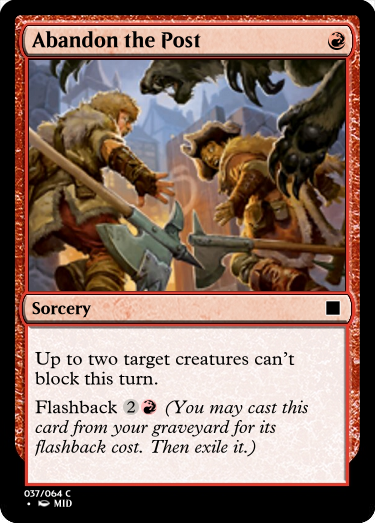 Abandon the Post having its cost simply reduced by one on casting and one on flashback gives red an above-rate finisher. It’s not like Nightbird’s Clutches was anything crazy in original Innistrad, which Abandon the Post is a functional reprint of.
Abandon the Post having its cost simply reduced by one on casting and one on flashback gives red an above-rate finisher. It’s not like Nightbird’s Clutches was anything crazy in original Innistrad, which Abandon the Post is a functional reprint of.
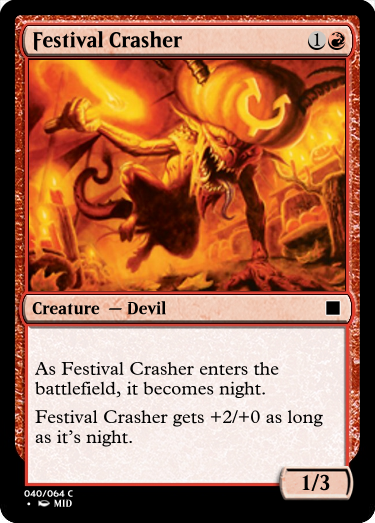
Festival Crasher could synergize with the werewolves and other night cards, allowing you a way to flip your creatures without having to pass your turn or hope that your opponent passes their turn.
Yes, it’s a little more complex that it turns it to night when it ETBs rather than day, but I think if other red cards in the set also turned it to night on ETB as well, then the flavor would help with understanding: because of course the devils turn it to night!
That division of red cards turning it to night on ETB (and maybe adding a green/black one as well), and white/blue cards turning it to day on ETB, is an example of something that could’ve been discovered by this system and implemented before set release.
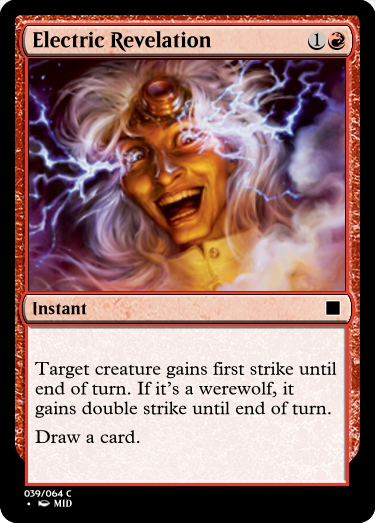
And Electric Revelation could be good anytime, offensively or defensively, whether you have werewolves or not, or just to cycle.
I don’t think these small changes would revolutionize MID draft, but I think they’d be a step in the right direction as red cards I’d be tempted to take over blue/black cards. And, most importantly, they’re things that could be discovered/tweaked before the set is released, to identify color disparities in the future.
So what do you think? Do you think a system like this could work, or do you have another idea in mind? I think it could be fun to try this system on the next set before it releases, to see if it can predict anything about the limited environment!
Either way, let me know, and looking forward to going on more deadly design dives with you soon.
